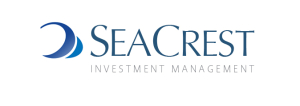The global stock markets ended 2020 on a high note and with little pullback they proceeded to achieve new highs when the first quarter of 2021 came to a close. For the 12 months ended March 31, 2021 the S&P rose over 51%, the Dow Jones Industrial Average over 53% and the NASDAQ Composite over 73%. The rally was global with the MSCI All Country World Index returning over 55% for the same 12 month period.
During the first quarter of 2021, the S&P rose over 6%, the Dow Jones Industrial Average over 8%, the NASDAQ Composite over 2% and the MSCI All Country World Index returned over 4.6%. Not done with spending, politicians in Washington are preparing another multi-trillion-dollar package, camouflaged as an infrastructure bill. For the quarter, U.S. high grade corporate bonds represented by the ETF LQD, fell over 5% as the Bloomberg Global Aggregate index fell over 4%. In yield terms, the 10-year U.S. Treasury note ended 2020 at a yield of 0.92% and the most recent quarter at 1.74%.
As we noted last quarter, global central banks continued to support their currencies, propping up their economies as well as buying as much of the new issue debt (both Government and in many cases corporate) as they were able. Governments around the world also continued to fight Covid-19 with more and more funds. Only in the U.S., are we seeing vaccine inoculations in greater daily volume as more Americans are vaccinated in a well-orchestrated endeavor. Europe and many other nations around the world appear less organized in getting their populations vaccinated resulting in continued lockdowns in an attempt to control further outbreaks. However, prospects are good globally for a more rapid and effective effort later this summer/fall to immunize countrywide populations, especially in industrialized nations. The effectiveness of a coordinated global vaccination effect will in turn reflect heavily on how quickly the global economy recovers.
When questioned about higher interest rates in the U.S., Federal Reserve Chairman Powell noted that higher yields reflected economic recovery and not disorderly trading, a message he repeated a number of
times throughout the quarter. He also reiterated that the FOMC is not ready to reduce interest rates at this time or for the next two years. This suggests that any jump in inflation in the near term will be transitory in nature and not problematic long-term. He does not believe a justifiable move by the FOMC to raise interest rates or slow asset purchases will be necessary. We had some concern regarding the U.S. dollar last quarter, but it has largely recovered from its sharp decline in the final quarter of 2020. Gold,
which conversely had risen sharply has declined back towards levels seen 12 months ago. Bitcoin and the other crypto currencies continued their ascent be it based on perceived value or speculative momentum. Only time will tell.
As we noted during the last two quarters, we anticipate that market volatility should ramp-up further as we head into summer. A possible correction in the global equity markets continues to be a concern. As the Covid-19 epidemic takes its toll on humanity, dislocation in global markets is not out of the question, especially given elevated valuations. Our continuing search for undervalued assets requires patience. Until next quarter, stay safe and healthy.
